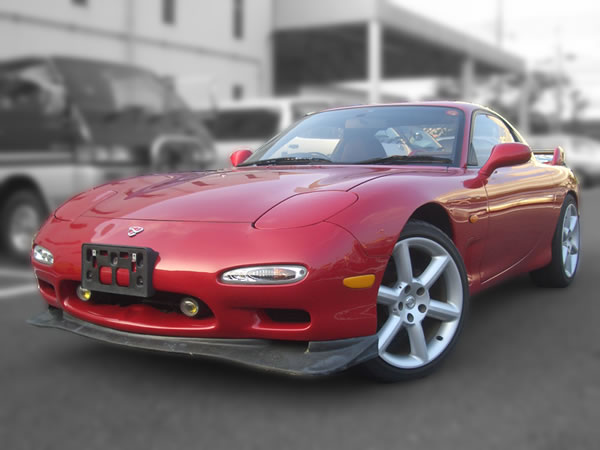
Similar to the previous RZ but now with Bilstein shocks and 17" BBS wheels with Bridgestone tires. Special editions and new trims continued to crop up from here on out. Anyone who wanted an automatic would’ve had one of these. Types S and X were subsequently renamed Touring S and Touring X. It was 66 lbs lighter than the Type R and came in Brilliant Black with the regular wheels painted Gunmetal Gray.
#JDM RX7 FD3S RIMS DRIVER#
Limited to 300 units, this was a 2-seater sports model based on the Type R but with upgraded Showa shocks, new springs, lightweight Pirelli P-Zero tires (ZR-rated), different drive ratios, Recaro seats, A/C/stereo delete, driver kneepad on the door panel, and drilled alloy passenger footrest. Kijima’s first brainchild was the limited-run RZ. Shortly after launch, Takao Kijima succeeded Koby as the RX-7’s program manager. Types S, R, and X and iterations and variations of them will go on to constitute the regular production lineup of the FD throughout its life. In contrast to the Type R, this was more of a GT model although still very hard core compared to most other sports cars. Top-of-the-line, with Hi-Reflex exterior paint, driver side air bag, leather trim, automatic A/C, sunroof, cruise control, and the fancy Bose Acoustic Wave sound system. The sports model, with grippy suede seats, projector-style halogen fog lights, air dam with brake cooling ducts, rear spoiler, ZR-rated tires, stiffer shocks, front strut tower brace, and dual oil coolers. This was the base model, with standard Torsen limited-slip differential, ABS, alloy wheels, power-assisted steering, power windows/mirrors/lock, AM/FM stereo with cassette and 5 speakers, leather steering wheel/gear knob/hand brake handle, A/C, cloth seats, and VR-rated tires. All standard FDs across the board were specified with the new 13B-REW engine with intercooled twin sequential turbo, double-wishbone suspension all around, “power plant frame” that rigidly connects the engine/transmission to the rear differential, and 2+2 seating. Introduced at the '91 Tokyo Motor Show, its development was led by Takaharu “Koby” Kobayakawa, whose credentials include being one of the people at Mazdaspeed’s helm in the early '90s. Of these, Ẽfini was the sporty home market brand, and hence the new RX-7 was marketed under it. The result was a plethora of curiously-named brands: Eunos, Ẽfini, Autozam, Xedos, and the stillborn Amati. In the early '90s, Mazda attempted to diversify itself in the footsteps of Toyota/Lexus, Nissan/Infiniti, and Honda/Acura. Last but not least, photos of specific trims, especially the limited editions, of earlier cars are not easy to find I did my best to include a reasonable number of them.

Where possible, the month when a special edition was available is denoted following a period after the year (e.g. Not every single model of every single year is listed here carry-overs are not mentioned, but any changes or new models are. You may be surprised by how many variants there were Mazda loves limited runs of special editions. Here’s something I’ve wanted to do for a while, a catalog of every FD model (or trim) in its home market. Not only that, it reeled in profits for Mazda, something that can’t be said for many high-profile sports cars (though this may be due to the long production run). Yet while it was prematurely pulled from many markets, it still lived a long life in Japan. Unfortunately, it didn’t enjoy the commercial success of its predecessors, due partly to the economic situation of the '90s and partly to the changing marketplace thanks to emergence of SUVs. Beautiful, lithe, powerful, yet elegantly simple, it’s the ultimate expression of Mazda’s sports car ethos. As much as I love its contemporaries–be it Skylines, Supras, or Z-cars–RX-7 is the special one to me. The third generation RX-7, known to the geeks as FD3S, is one of the most iconic Japanese sports cars of the ‘90s.


 0 kommentar(er)
0 kommentar(er)
